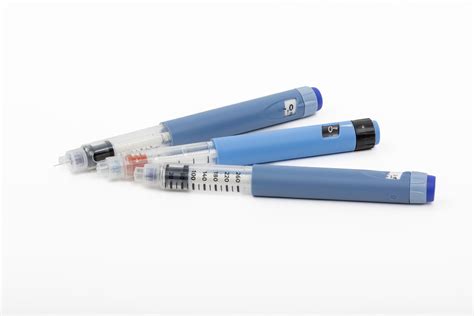Intro
Learn to use an insulin pen correctly with our guide, covering injection techniques, dosage management, and diabetes care for optimal glucose control and improved health outcomes.
Insulin pens have revolutionized the way people with diabetes manage their condition, offering a convenient, discreet, and relatively painless way to administer insulin. The correct use of an insulin pen is crucial for effective diabetes management, ensuring that the right dose of insulin is delivered at the right time to maintain blood glucose levels within a target range. Understanding the importance of proper technique is essential for individuals who are new to using insulin pens, as well as for those who have been using them for some time, to prevent errors and ensure optimal glucose control.
The development of insulin pens reflects advancements in diabetes care, aiming to make insulin therapy more user-friendly and accessible. These devices have become a cornerstone in the management of both type 1 and type 2 diabetes, especially for those requiring multiple daily injections. By simplifying the insulin administration process, insulin pens contribute to better adherence to treatment plans, which is vital for preventing diabetes-related complications. Moreover, the ease of use and the reduced pain associated with insulin pens compared to traditional syringes have significantly improved the quality of life for many individuals with diabetes.
The importance of using insulin pens correctly cannot be overstated. Incorrect use can lead to overdosing or underdosing, resulting in hyperglycemia or hypoglycemia, respectively. Both conditions can have serious health implications if not addressed promptly. Therefore, it is essential for individuals using insulin pens to be thoroughly educated on their proper use, including how to load the pen, prime it, administer the insulin, and store the device. This education should be provided by healthcare professionals and reinforced through patient support materials and resources.
Introduction to Insulin Pens

Insulin pens are designed to be easy to use, with a simple and intuitive mechanism for loading insulin cartridges, setting the dose, and injecting the insulin. They come in various models, including reusable pens that use replaceable cartridges and disposable pens that are discarded when empty. The choice between these types often depends on personal preference, lifestyle, and the specific needs of the individual's diabetes management plan.
Benefits of Insulin Pens
The benefits of insulin pens over traditional syringe methods include improved accuracy in dosing, reduced pain due to the finer needle gauge, and enhanced convenience, allowing for discreet insulin administration in various settings. Additionally, many insulin pens are designed with memory functions that can track the last dose administered, helping users keep a record of their insulin therapy.How to Use an Insulin Pen

Using an insulin pen involves several steps that must be followed carefully to ensure safe and effective insulin administration. The process typically includes preparing the pen, setting the dose, injecting the insulin, and post-injection care.
- Preparing the Pen: This involves attaching a new insulin cartridge to the pen (for reusable models), removing any protective caps, and ensuring the pen is at room temperature.
- Priming the Pen: Before the first use of a new cartridge, the pen must be primed to remove any air bubbles from the cartridge and to ensure the pen is working correctly. This is usually done by dialing up a small dose (typically 2 units) and then firing the pen into the air.
- Setting the Dose: The user sets the required dose of insulin using the dose selector on the pen. It's crucial to follow the manufacturer's instructions for this step.
- Injecting the Insulin: Choose an injection site (usually the abdomen, thigh, or arm), insert the needle into the skin at the correct angle, and press the injection button to deliver the insulin.
- Post-Injection Care: After injecting, remove the needle from the skin, apply gentle pressure to the injection site (without rubbing), and dispose of the needle safely.
Key Considerations
- **Storage and Handling**: Insulin pens should be stored in a cool, dry place when not in use, protected from direct sunlight and heat sources. - **Expiration Dates**: Always check the expiration date of the insulin cartridges and the pen itself to ensure the insulin is effective and safe to use. - **Traveling with Insulin Pens**: When traveling, it's essential to keep insulin pens in a carry-on bag and to have a letter from a healthcare provider explaining the need for insulin and the devices used.Common Mistakes to Avoid

Despite the user-friendly design of insulin pens, mistakes can occur, especially if the user is not adequately trained or if instructions are not followed carefully. Common mistakes include:
- Incorrect Dosing: Setting the wrong dose can lead to underdosing or overdosing.
- Not Priming the Pen: Failing to prime the pen can result in the delivery of an incorrect dose.
- Incorrect Injection Technique: Injecting at the wrong angle or not inserting the needle fully can affect the absorption of insulin.
- Not Rotating Injection Sites: Failing to rotate injection sites can lead to lipodystrophy, a condition where the subcutaneous fat layer at the injection site undergoes changes.
Managing Complications
While insulin pens are designed to minimize errors, it's crucial for users to know how to manage potential complications, such as hypoglycemia or local reactions at the injection site. Keeping a glucagon emergency kit on hand and being aware of the signs of hypoglycemia (shaking, sweating, hunger, drowsiness, or irritability) can help in managing emergencies.Future Developments in Insulin Therapy

The field of diabetes management is continually evolving, with ongoing research into new insulin formulations, pen devices, and technologies aimed at improving the ease and effectiveness of insulin therapy. Advances in smart pens that can integrate with mobile apps to track doses and provide reminders, as well as developments in patch pumps and automated insulin delivery systems, are expected to further enhance the management of diabetes.
Impact on Diabetes Care
These advancements hold the promise of not only simplifying diabetes management but also of providing more personalized and effective care. By leveraging technology and innovative insulin delivery systems, individuals with diabetes can look forward to better blood glucose control, reduced risk of complications, and an improved quality of life.Conclusion and Next Steps

In conclusion, using an insulin pen correctly is a critical aspect of effective diabetes management. By understanding the benefits, proper use, and common mistakes to avoid, individuals with diabetes can optimize their insulin therapy and improve their overall health outcomes. As technology and insulin pen designs continue to evolve, staying informed about the latest developments and best practices will be essential for those living with diabetes.
For those looking to learn more or to share their experiences with insulin pens, there are numerous resources available, including patient support groups, online forums, and educational materials from healthcare providers and manufacturers. Engaging with these resources can provide valuable insights, tips, and support, ultimately contributing to better diabetes management and care.
What is the most important thing to remember when using an insulin pen?
+Always follow the manufacturer's instructions for preparing and using the insulin pen, and ensure you understand how to set the correct dose and administer the insulin properly.
Can I use an insulin pen if I have vision problems?
+Yes, many insulin pens are designed with features to assist individuals with visual impairments, such as audible clicks when setting the dose or a tactile marker to help with dose setting. It's essential to discuss your specific needs with your healthcare provider to find the most suitable insulin pen.
How do I store my insulin pen when not in use?
+Always store your insulin pen according to the manufacturer's instructions, typically in a cool, dry place away from direct sunlight and heat sources. Be sure to check the expiration date of the insulin and the pen itself.
